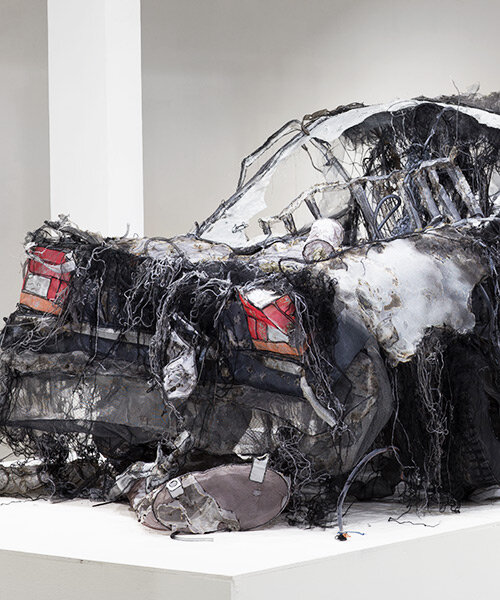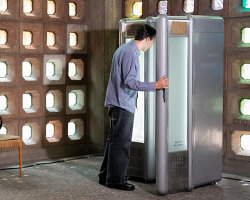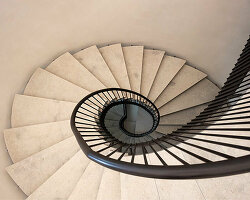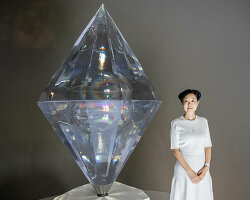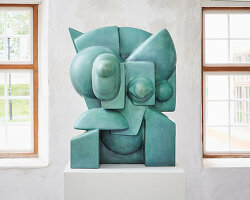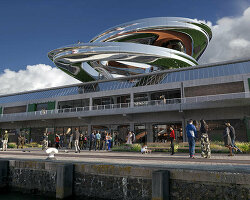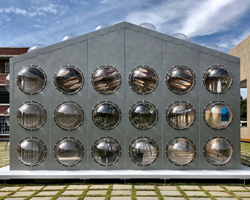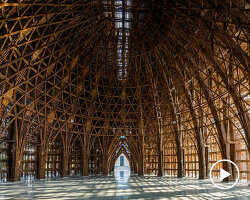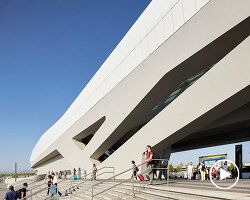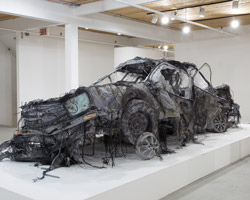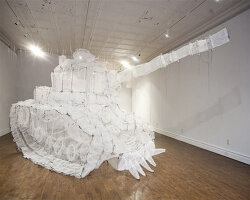a full-scale tank made from fragile fabric; a car in ruin rendered from semi-translucent textiles; a shipwreck sculpted as if a sketch — jannick deslauriers turns weighty objects, often of industrial and mechanical significance, into ethereal forms evocative of ghosts. ‘the transparency of the fabric allows me to create objects that seem ghostly to us,’ deslauriers tells designboom. ‘this material can transform industrial or everyday objects into delicate and light replicas. by doing this, I somehow evoke the spirit of these things and their humanity.’ deslauriers’ use of transparent fabric highlights the ephemeral nature of the world around us, the fleeting fragility of our surroundings.
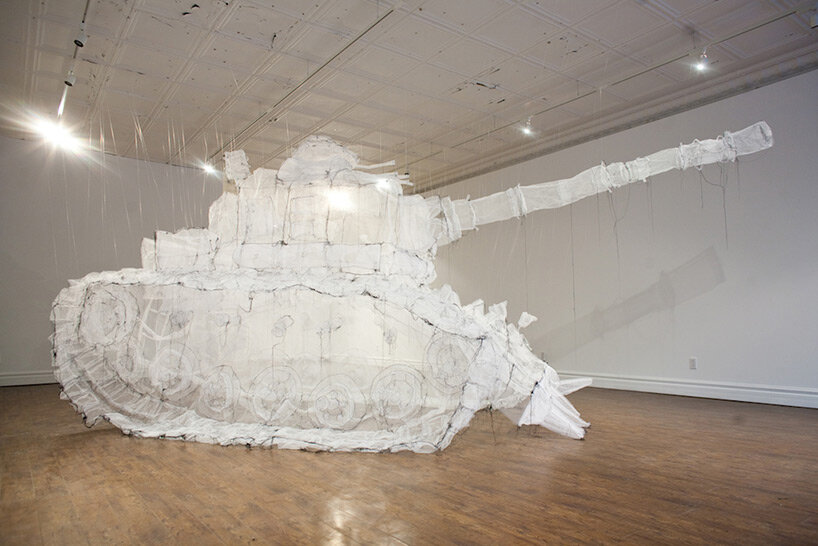
what’s left, 2010 | image by liam maloney | read more on designboom here
all images courtesy of jannick deslauriers
a detailed and thorough process of research coupled with meticulous making — sewing, stitching, burning — renders objects like pianos, shipping containers, and apartment buildings into poetic phantoms. ‘by reproducing a building that had been demolished in the 70s, I could speak of past lives, of the history of this building and at the same time of a collective history,’ the artist shares.
designboom spoke with jannick deslauriers about the idea of weightlessness, her current work, and the fascinations feeding into her creative practice.
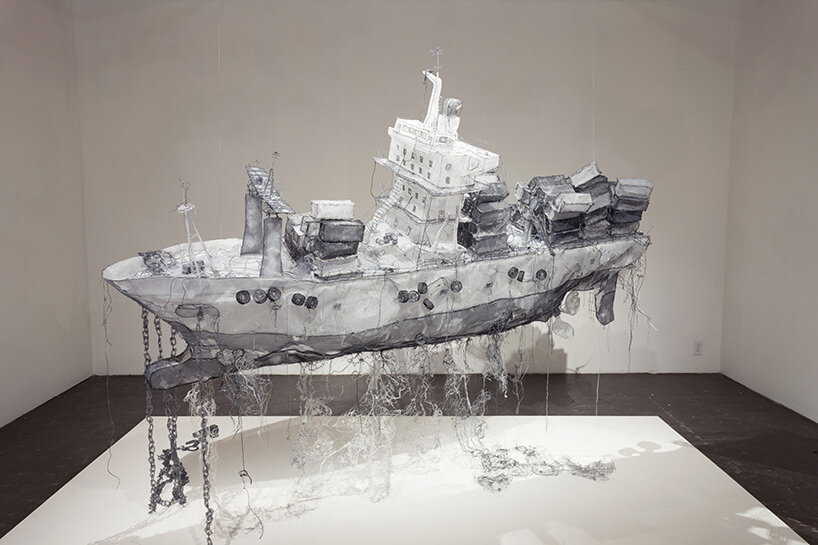
shipwreck, 2019 | image by mike patten
designboom (DB): what aspects of your background and upbringing have shaped your creative principles and philosophies?
jannick deslauriers (JD): my dad works in construction and I think that definitely had an impact on me. when I was a kid, I always wanted to help him build stuff. I think he passed on that passion for work and for solving problems. if something broke at home, he was always able to fix it and I was fascinated by that. I think in my own way, I learned how to solve construction problems…but in fabric. I was also lucky enough to grow up with my grandmother and she taught me to sew at a very young age. early on, I started making my own clothes, but also puppets and costumes. I had a lot of imagination and made worlds for myself. in high school, I played team sports, and the physical training gave me discipline that later reflected in my ability to work for long hours. I often compare the space I have to put myself in to sew for hours to a kind of training session — it is often physically taxing, but I stay focused on the end goal. in college, I was really passionate about my philosophy classes, and I’ve had amazing professors. in retrospect, I find myself very lucky to have had people on my path who taught me and inspired me to be an artist, because I don’t necessarily come from a place where an art career was an option.
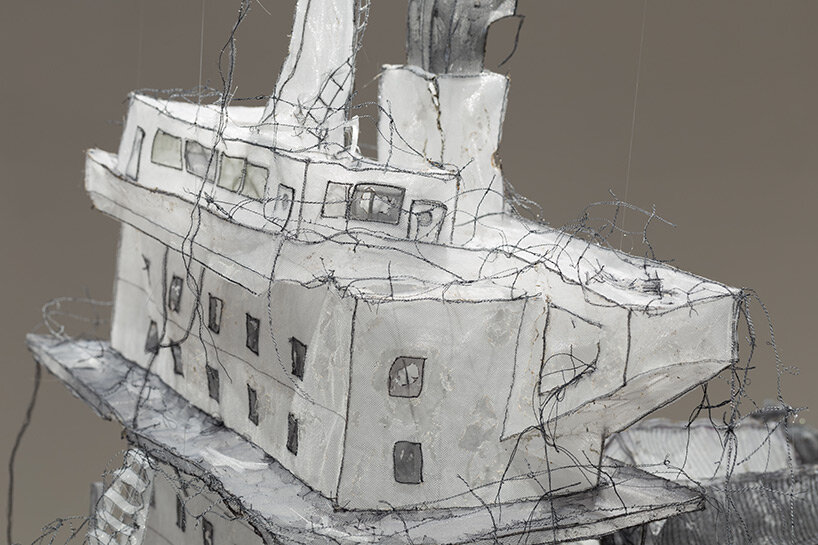
shipwreck, 2019 | image by mike patten
DB: what draws you to textile materials as an artistic medium, and what are their personal meaning to you?
JD: in college, I was very interested in fashion and set design. I was fascinated by haute-couture and I was a fan of vivienne westwood and alexander mcqueen. at that time, I thought I should study art and then try to get into a fashion school. once in undergrad, I followed a basic curriculum — drawing, painting, etc. I remember one particular moment when I was trying to paint something that would feel ghostly, but I couldn’t quite get it right. the flatness of the canvas and the limitations I was experiencing with the paint did not allow me to translate the image I had in mind. it was then that I made my first fabric sculpture, a ladder made out of tulle. I suspended it in the student gallery and the lighting projected beautiful shadows onto the walls. it was a magical moment; I had just discovered how to use space and material to create the impression of a ghost. to me, that was much more exciting than simply painting it, because then visitors could interact with the object, and they really got to see a phantom ladder. the piece was super poetic, delicate and mysterious.
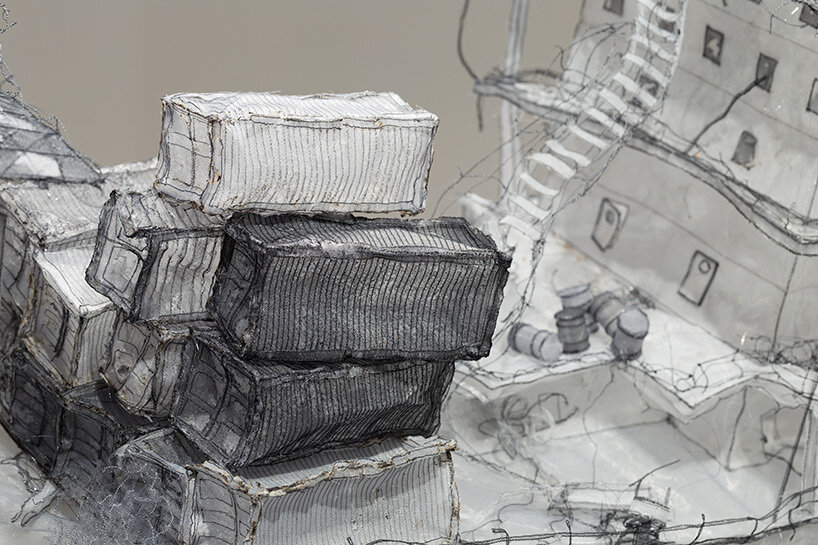
shipwreck, 2019 | image by mike patten
DB: where do you work on your projects, and what are the creative strategies you adopt when working?
JD: I have lived in my studio for years now — it is my favorite place to be. I have a very specific ritual; I like to work early in the morning or in the evening. when I am at the core of a project, I love to jog outside. physical training is a moment for thinking and for reveries and it is crucial when I’m creating something, because it is where all the ideas take shape in my mind. I also spend a lot of time searching for images, reading and watching TV shows or films. I think my time in the studio is equally split between searching and making.
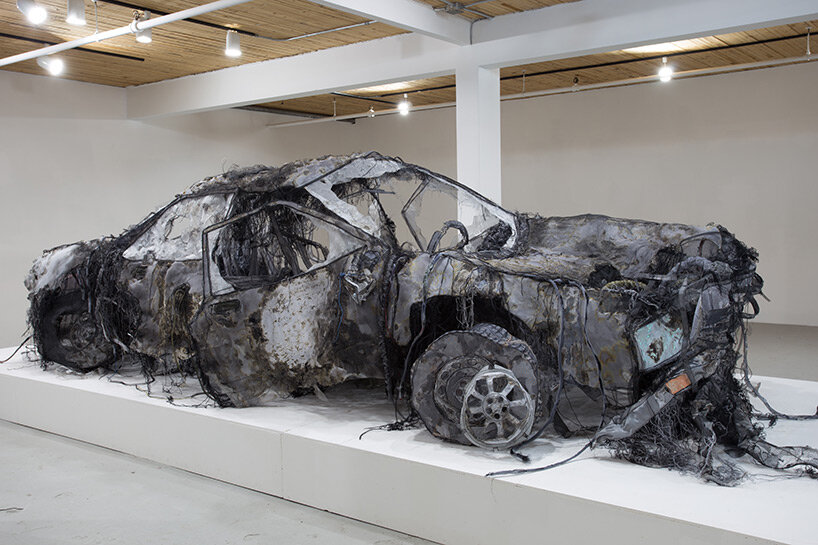
sentence, breath and shroud, 2018 | image by mike patten | read more on designboom here
DB: much of your work deals with weightlessness, transparency and fragility, yet there’s a duality between delicacy, and some of the weighty, powerful objects they represent — can you talk about the idea of contrast, and how your work overlaps these realities?
JD: the transparency of the fabric allows me to create objects that seem ghostly to us. this material can transform industrial or everyday objects into delicate and light replicas. by doing this, I somehow evoke the spirit of these things and their humanity. by reproducing, for example, a building that had been demolished in the 70s, I could speak of past lives, of the history of this building and at the same time of a collective history. transparency is very evocative to me. in more recent pieces such as the tank or the car, the contrast between the delicacy of the material and the violence of the subject has become even more striking. for me, all the love and care embedded into the handwork is opposed to the heaviness and the violence that these objects suggest. the delicacy of the construction speaks of a fragility; sewing is evocative of stitching and repair and I think, somehow, I’m making healed ghosts of objects and machinery. to me, the work also speaks of a certain intangibility or of some sort of fantasy world that is slowly transforming. it gives a space for imagination and dreaming, despite the heaviness.
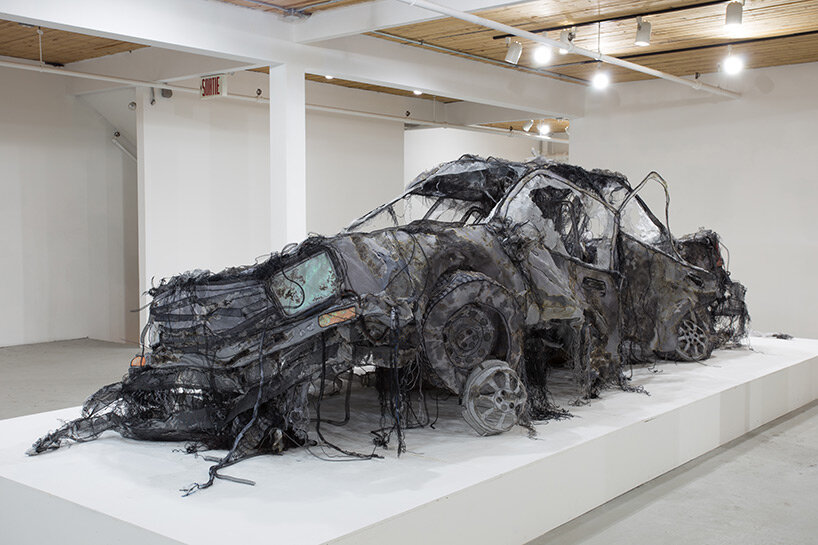
sentence, breath and shroud, 2018 | image by mike patten
DB: in a world that is increasingly virtual, your work is firmly rooted in tactile and physical experience. do you think society today is moving too far away from materiality, and traditional ways of making?
JD: actually, the virtual interests me a lot because all my sculptures start with a long research on internet. when I get the idea for making a specific object, I look at dozens of images online. for the car, for example, I looked for wrecked or exploded cars from different times and places in the world. I also looked at images of intact cars, mechanical parts and so on. after seeing all these images, I am able to make some sort of visual synthesis and I manage to design my own version. the car I made is not a reproduction of a specific car, but rather an imitation of the latter inspired by dozens of web-culled images. I am interested in the idea of reality, physical or tactile reality versus digital reality. the world we live in is more and more rooted in a virtual space, and I think it’s never been truer to say that now, after a year of a pandemic that had forced most of our interactions to migrate online. I find the current moment incredibly interesting; unsettling and inspiring. I obviously have a great passion for handwork and for the material. maybe it is some sort of statement about my fears or concerns of seeing the world becoming un-graspable. the boundaries between physical and digital existence are definitely blurring, and I think this is why I’m interested in creating an impression of unreal, fantastical or apparitional through very tactile objects.
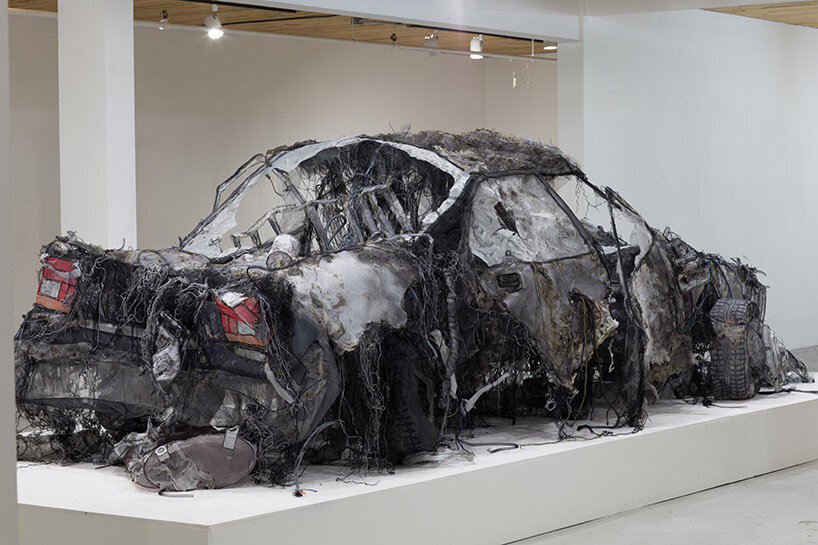
sentence, breath and shroud, 2018 | image by mike patten
DB: meticulous detail and fragile fabrics are aspects of your work that appear incredibly complex to realize in sculptural form — which project has been the most challenging to execute? what were the challenges?
JD: I would say that each of my projects has been a technical challenge at the time I made it. being self-taught with sewing, I had to invent my own techniques and my sculptures became more and more complex and detailed as I made them. I have now reached a certain virtuosity with that technique and I can say that I am able to make just about anything out of fabric. obviously, a project like the car was extremely complicated technically because beyond the sewing, it is also burned. this project was a long process of trials and mistakes, but I love these moments of uncertainty where I have to find solutions. this is how, as artists, we make great discoveries and find new directions. it’s very satisfying and exciting to go through that process.
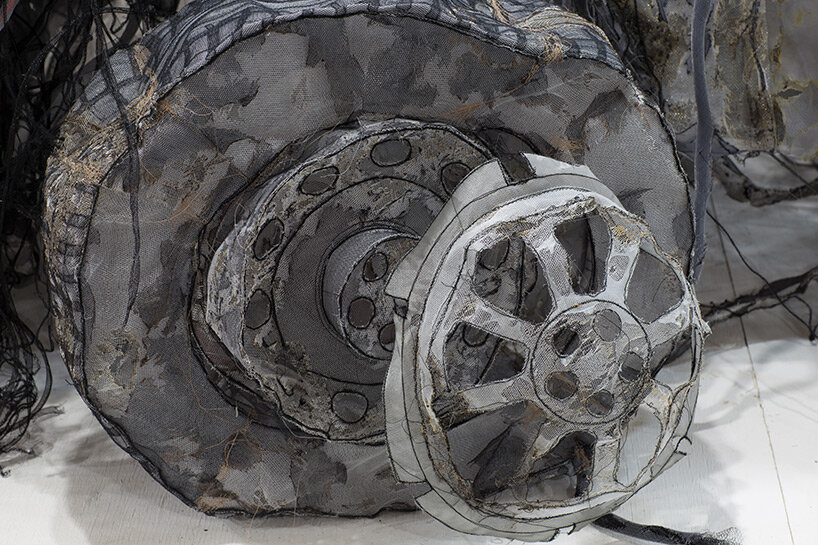
sentence, breath and shroud, 2018 | image by mike patten
DB: what impressions do you hope your work evokes? what topics do you hope it provokes discussion about?
JD: when you walk by the pieces, you feel like you’re in the presence of a specter; of something that doesn’t quite exist in our reality, and I like that idea. I am often told that my sculptures are seductive and bring a sense of lightness but are at the same time evocative of pain, wounds or violence. I like that tension between something that makes you feel light and heavy at the same time. I also love when people approach the work from a personal point of view. of course, I have my own ideas and motivations, but I am also interested in hearing people’s readings, as it often has to do with their personal experiences and sensibilities. I love meeting people during an exhibition — for me it is the most rewarding part of being an artist, when you feel that you can touch people, exchange and learn.
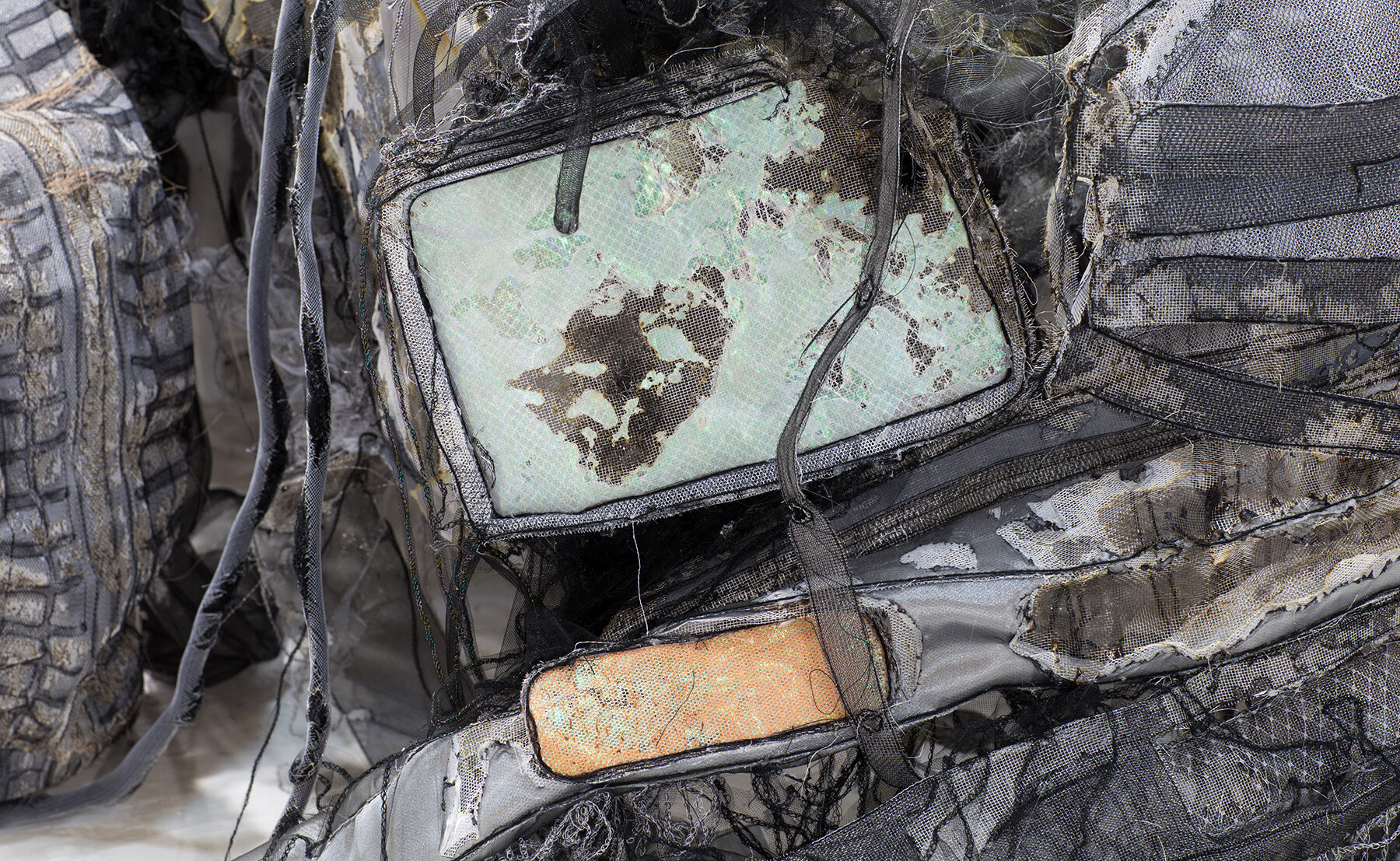
DB: what are you currently fascinated by, and how is it feeding into your artistic practice?
JD: this past year has been very special for me because I left montreal to do my master degree in sculpture at yale in the US. being here in the midst of a pandemic with all the challenges, adaptations and experiences it brought definitely had an impact on my research. the situation we find ourselves in globally is fascinating, confusing and also inspiring. I obviously thought a lot about death and illness, but also about the digital space we now spend the most time in. I recently lost a close relative to cancer and it visits were not permitted. all contact had to be through a screen, and it felt so surreal. solitude, grief, healing, death — these themes are definitely a source for the project I am currently working on. it’s slowly taking shape in the studio.
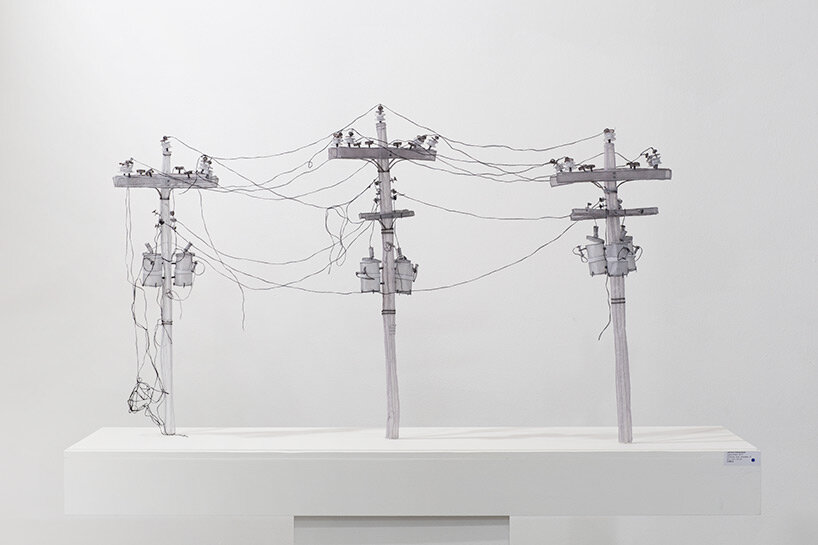
broken line, 2018 | image by mike patten
DB: can you tell us about any upcoming projects you are particularly excited about?
JD: I have a few projects on the way. this summer, I will be working on a film in collaboration with a canadian director who is making a short fiction film in which several of my sculptures will appear. the film is exploring the loss of memory through the dematerialization of a daily environment. it will be the first cinematographic experience for me, so I’m really looking forward to it. otherwise, I will be continuing to work on my project for my thesis exhibition, which will happen in march 2022. I’m developing a new research for it and I’m introducing new material, so I’m really enjoying myself in the studio right now. I don’t want to reveal too much about it because it will continue to evolve, but for the moment, I can say that medical equipment and haute-couture are the focus of my research and I’m currently creating a hospital bed in the stage of metamorphosis.
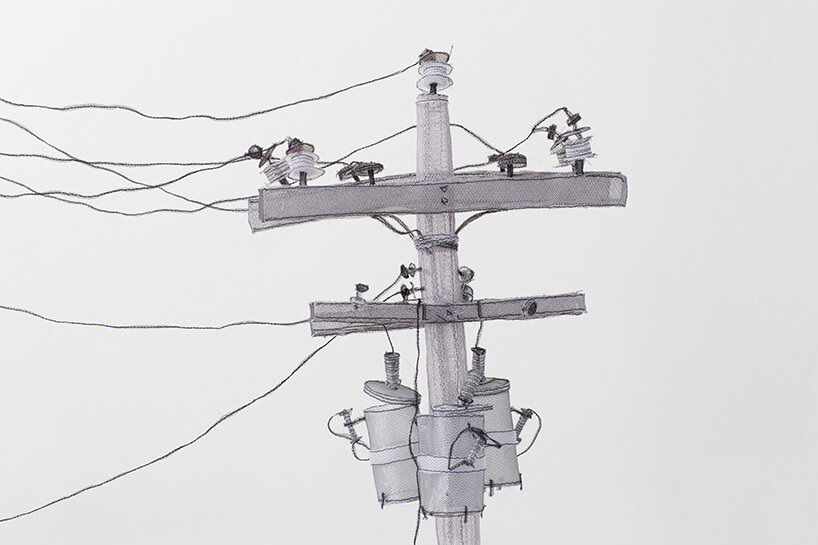
broken line (detail), 2018 | image by mike patten
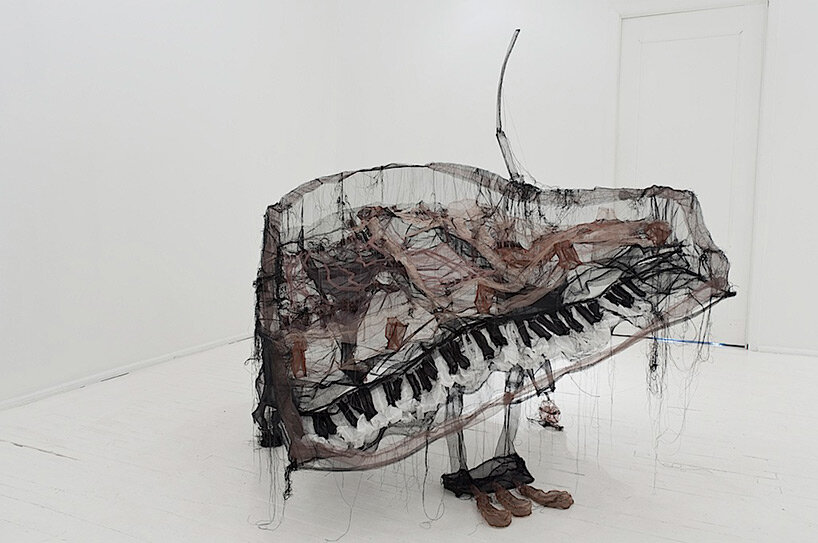
piano, 2010 | image by olivier bousquet
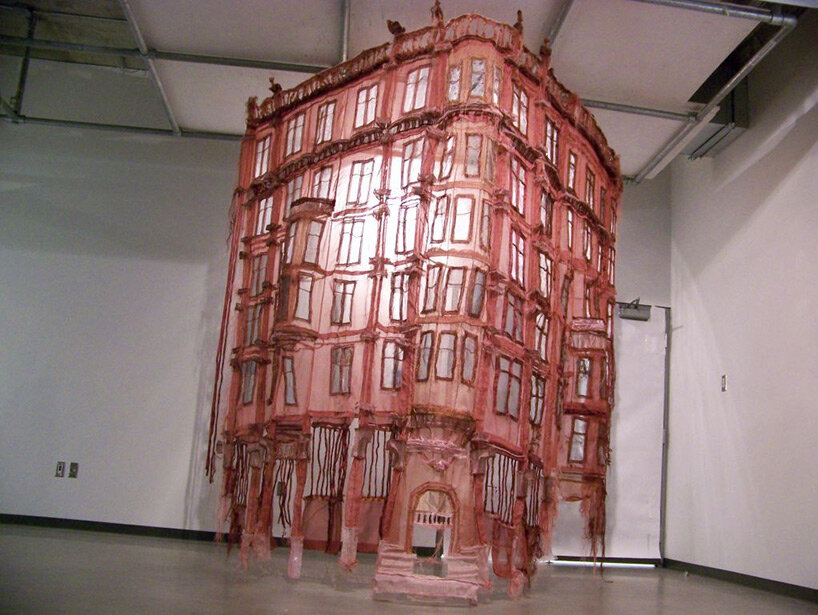
ghost of the queen’s hotel, 2006
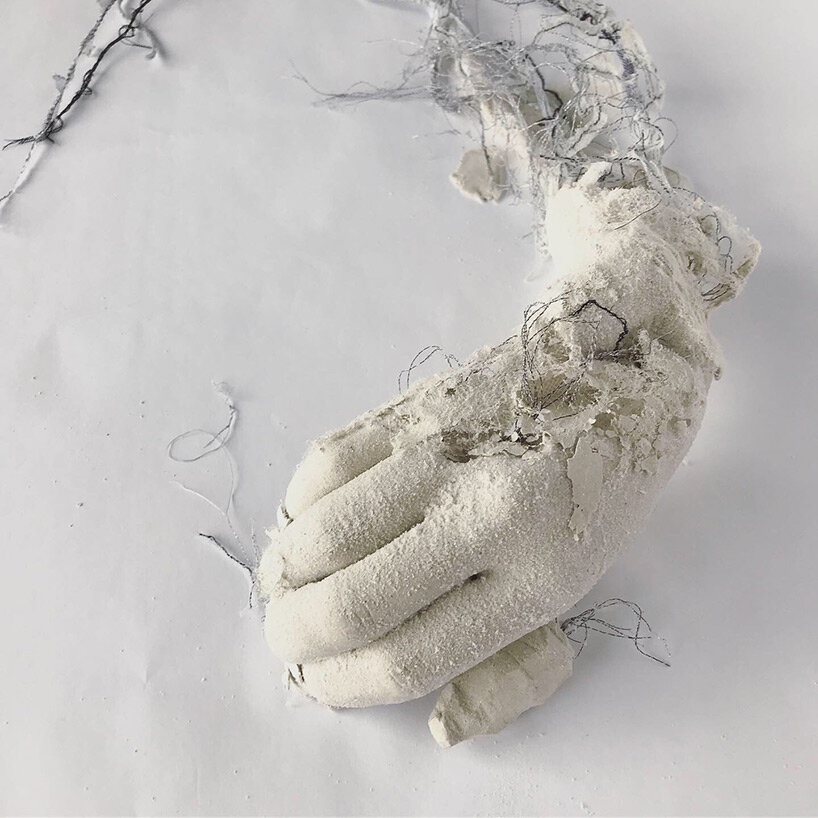
untitled (work in progress)
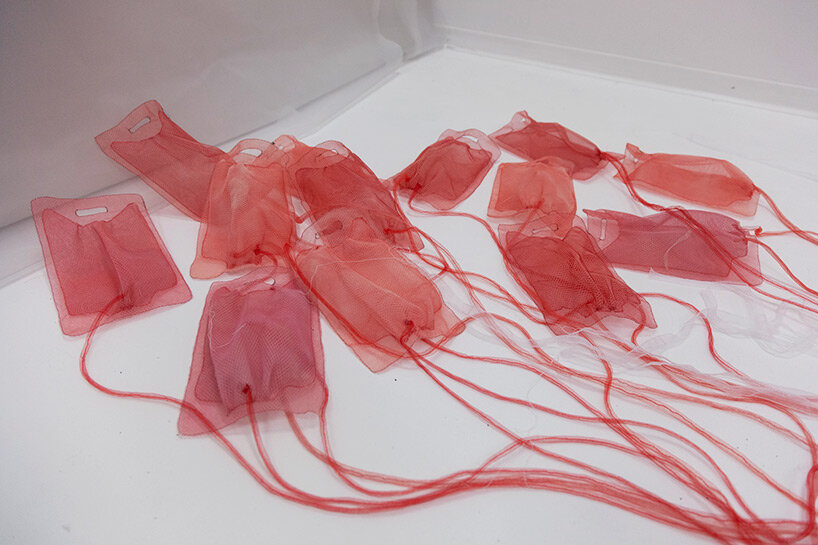
work in progress, details of new work/experimentation | image by emily barresi
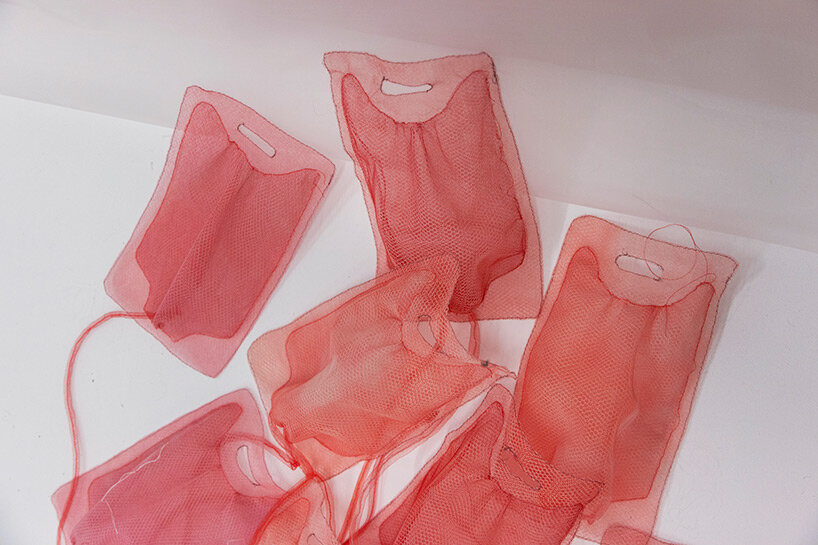
work in progress, details of new work/experimentation | image by emily barresi
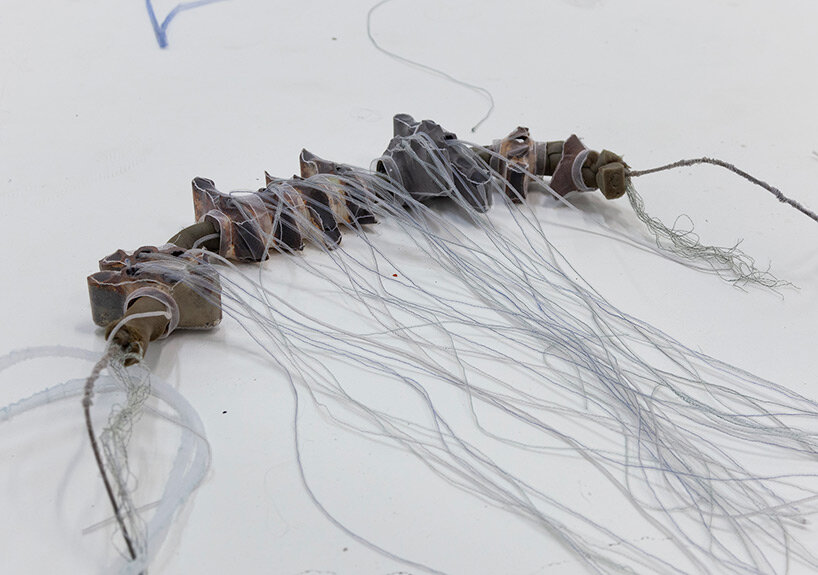
work in progress, details of new work/experimentation | image by emily barresi
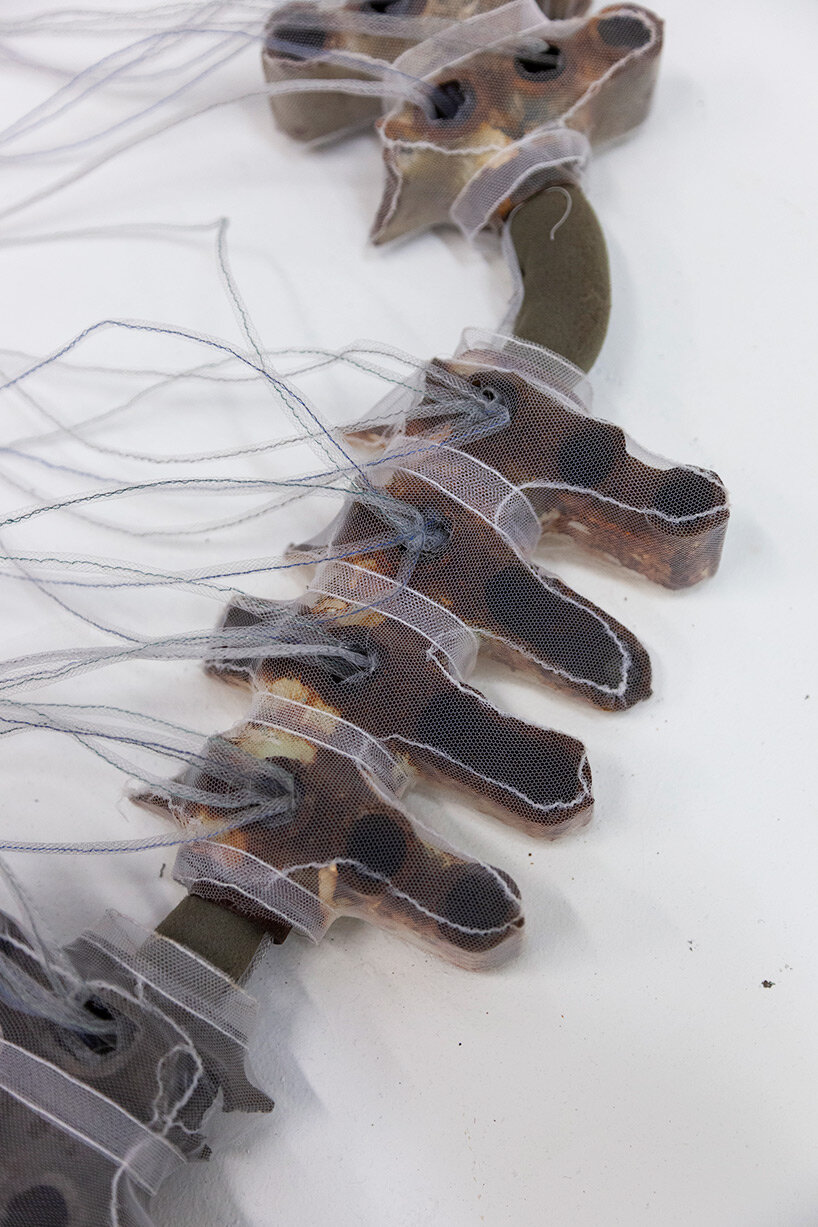
work in progress, details of new work/experimentation | image by emily barresi
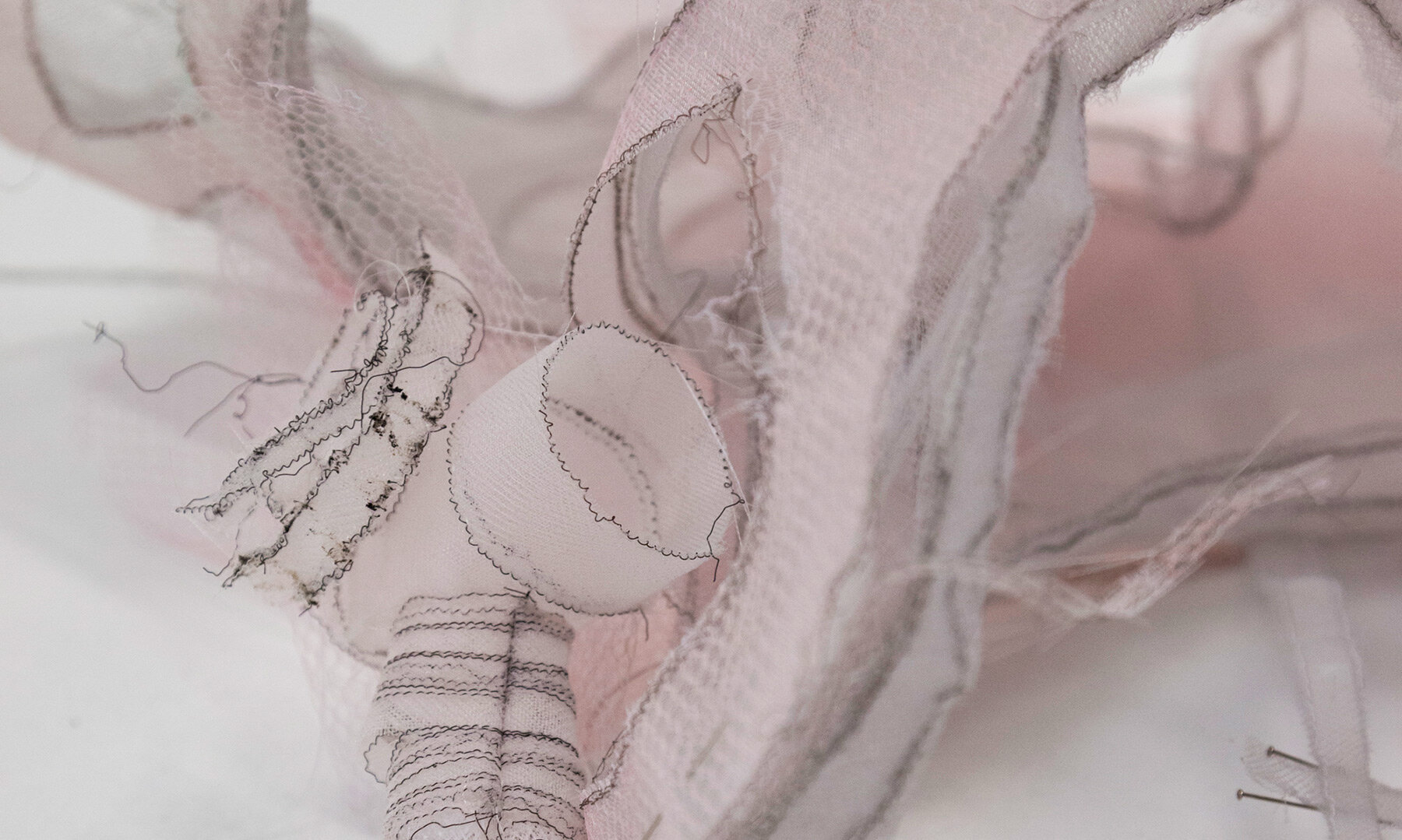
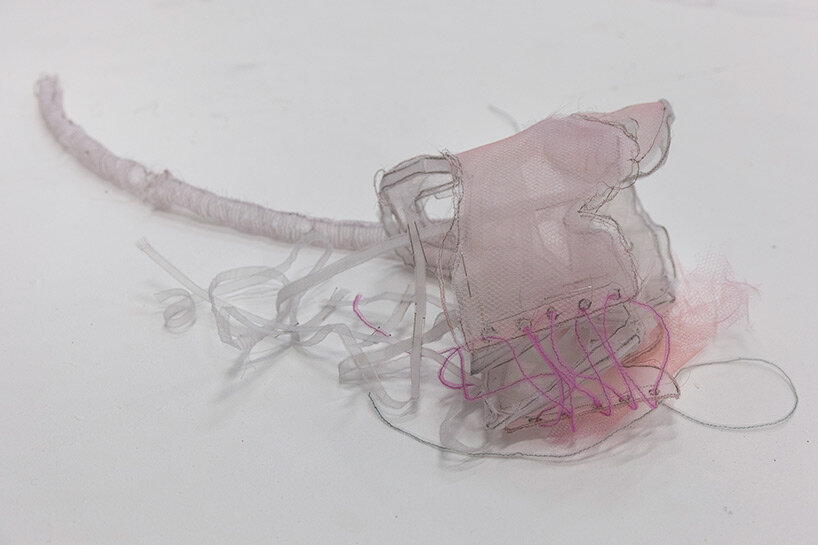
work in progress, details of new work/experimentation | image by emily barresi
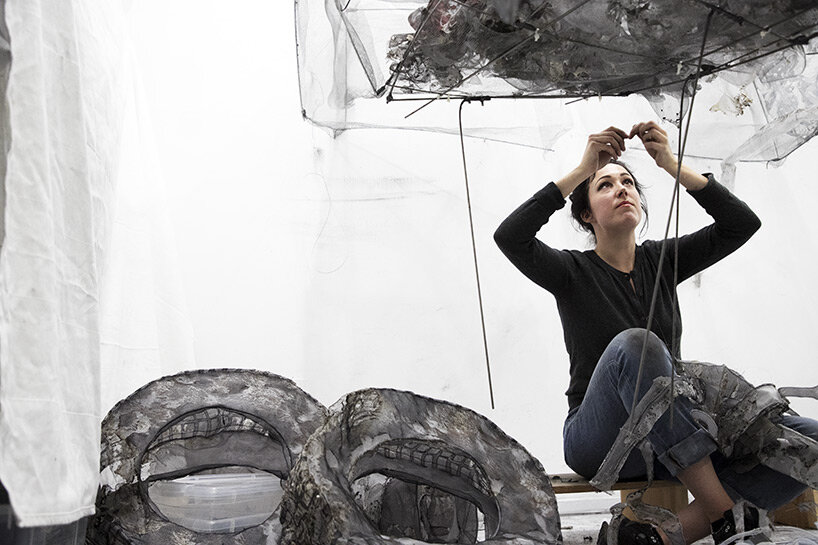
portrait of jannick deslauriers working on sentence, breath and shroud | image by berirouche feddal
art interviews (138)
dbinstagram (2250)
jannick deslauriers (3)
PRODUCT LIBRARY
a diverse digital database that acts as a valuable guide in gaining insight and information about a product directly from the manufacturer, and serves as a rich reference point in developing a project or scheme.
